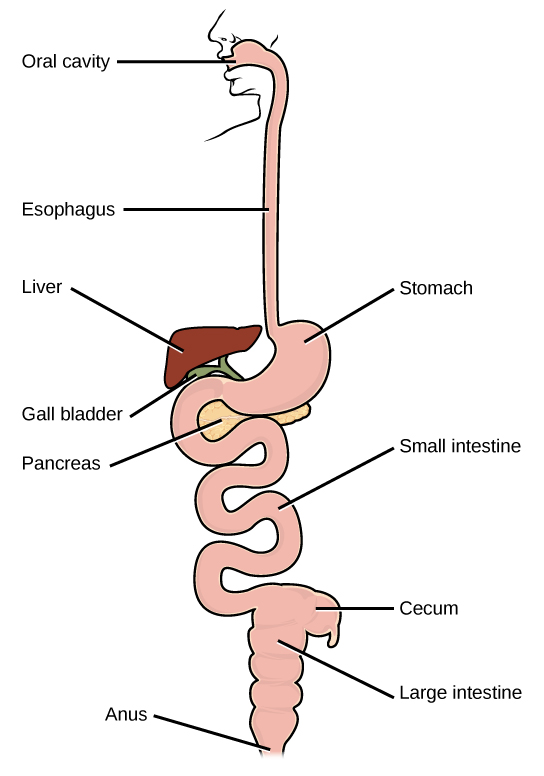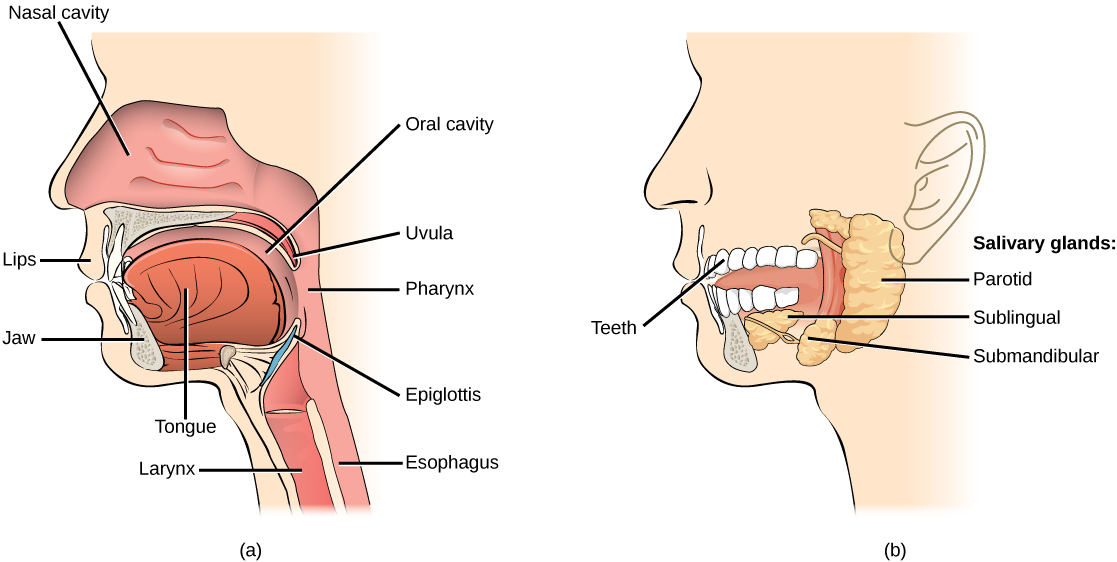| << Chapter < Page | Chapter >> Page > |

Both physical and chemical digestion begin in the mouth or oral cavity , which is the point of entry of food into the digestive system. The food is broken into smaller particles by mastication, the chewing action of the teeth. All mammals have teeth and can chew their food to begin the process of physically breaking it down into smaller particles.
The chemical process of digestion begins during chewing as food mixes with saliva, produced by the salivary glands ( [link] ). Saliva contains mucus that moistens food and buffers the pH of the food. Saliva also contains lysozyme, which has antibacterial action. It also contains an enzyme called salivary amylase that begins the process of converting starches in the food into a disaccharide called maltose. Another enzyme called lipase is produced by cells in the tongue to break down fats. The chewing and wetting action provided by the teeth and saliva prepare the food into a mass called the bolus for swallowing. The tongue helps in swallowing—moving the bolus from the mouth into the pharynx. The pharynx opens to two passageways: the esophagus and the trachea. The esophagus leads to the stomach and the trachea leads to the lungs. The epiglottis is a flap of tissue that covers the tracheal opening during swallowing to prevent food from entering the lungs.

The esophagus is a tubular organ that connects the mouth to the stomach. The chewed and softened food (i.e. the bolus) passes through the esophagus after being swallowed. The smooth muscles of the esophagus undergo peristalsis (contractions) that pushes the food toward the stomach. The peristaltic wave is unidirectional—it moves food from the mouth the stomach, and reverse movement is not possible, except in the case of the vomit reflex. The peristaltic movement of the esophagus is an involuntary reflex; it takes place in response to the act of swallowing and you don't exert conscious control over it.
Ring-like muscles called sphincters form valves in the digestive system. The gastro-esophageal sphincter (a.k.a. lower esophageal or cardiac sphincter) is located at the stomach end of the esophagus. In response to swallowing and the pressure exerted by the bolus of food, this sphincter opens, and the bolus enters the stomach. When there is no swallowing action, this sphincter is shut and prevents the contents of the stomach from traveling up the esophagus. Acid reflux or “heartburn” occurs when the acidic digestive juices escape back into the esophagus and the low pH irritates the unprotected surface. Prolonged and repeated exposure of the esophagus to this acidity can cause physical damage.

Notification Switch
Would you like to follow the 'Human biology' conversation and receive update notifications?